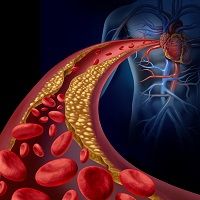Article
Antimalarial Drug Linked to Hyperlipidemia in Patients with Rheumatoid Arthritis
Author(s):
The use of the antimalarial drug hydroxychloroquine may be linked to a lower risk of hyperlipidemia among early rheumatoid arthritis patients when compared to the use of methotrexate.

The use of the antimalarial drug hydroxychloroquine may be linked to a lower risk of hyperlipidemia among early rheumatoid arthritis (RA) patients when compared to the use of methotrexate (MTX), according to research published in Arthritis Care & Research.
“Reports of inverse association between inflammatory markers and lipid parameters may explain this phenomenon,” the authors wrote, when commenting that previous research indicates that RA patients have a higher risk of cardiovascular disease. Other studies, though, have proposed lower total and low density lipoprotein cholesterol than non-RA patients.
In a retrospective analysis, researchers from Brigham and Women’s Hospital and Harvard Medical School in Boston analyzed early-RA patients using insurance claims from 2001 to 2012 in order to compare the risk of incident hyperlipidemia in early-RA patients after initiation of various DMARDs. The patients had confirmed early-RA diagnosis or a disease modifying anti rheumatic drug (DMARD) prescription of at least 12 months.
The investigators categorized the early RA patients into 4 groups: tumor necrosis factor α (TNFα) inhibitors ± nonbiologic (nb) DMARDs, MTX ± nonhydroxycholorquine nbDMARDs, hydroxychloroquine ± non-MTX nbDMARDs, and other nbDMARDs only.
More than 17,000 early RA patients (made up of more than 70 percent females who were mostly in their mid to late 40s) were included in the study, and, of those, 364 developed incident hyperlipidemia. Almost half of the patients (46 percent) initiated treatment with MTX, which was the other reference treatment.
The next largest group was treated with hydroxychloroquine (35 percent), followed by other non biologic agents (12 percent), and TNFα inhibitors (6 percent). The other non biologics agent treatments were made up of sulfasalazine (76 percent), leflunomide (16 percent), or azathioprine (7 percent).
The researchers determined that the adjusted hazard ratios for hyperlipidemia were 1.41 for TNFα inhibitors, 0.81 for hydroxychloroquine, and 1.33 for other nbDMARDs compared with MTX in the full cohort. Hazard ratios for the propensity score (PS) trimmed cohort were 1.18, 0.75, and 1.41 for TNFα inhibitors, hydroxychloroquine, and other nbDMARDs, respectively.
Hydroxychloroquine use showed significant reduction in low density lipoprotein, total cholesterol, and triglyceride levels from baseline compared with MTX in the subgroup analysis.




